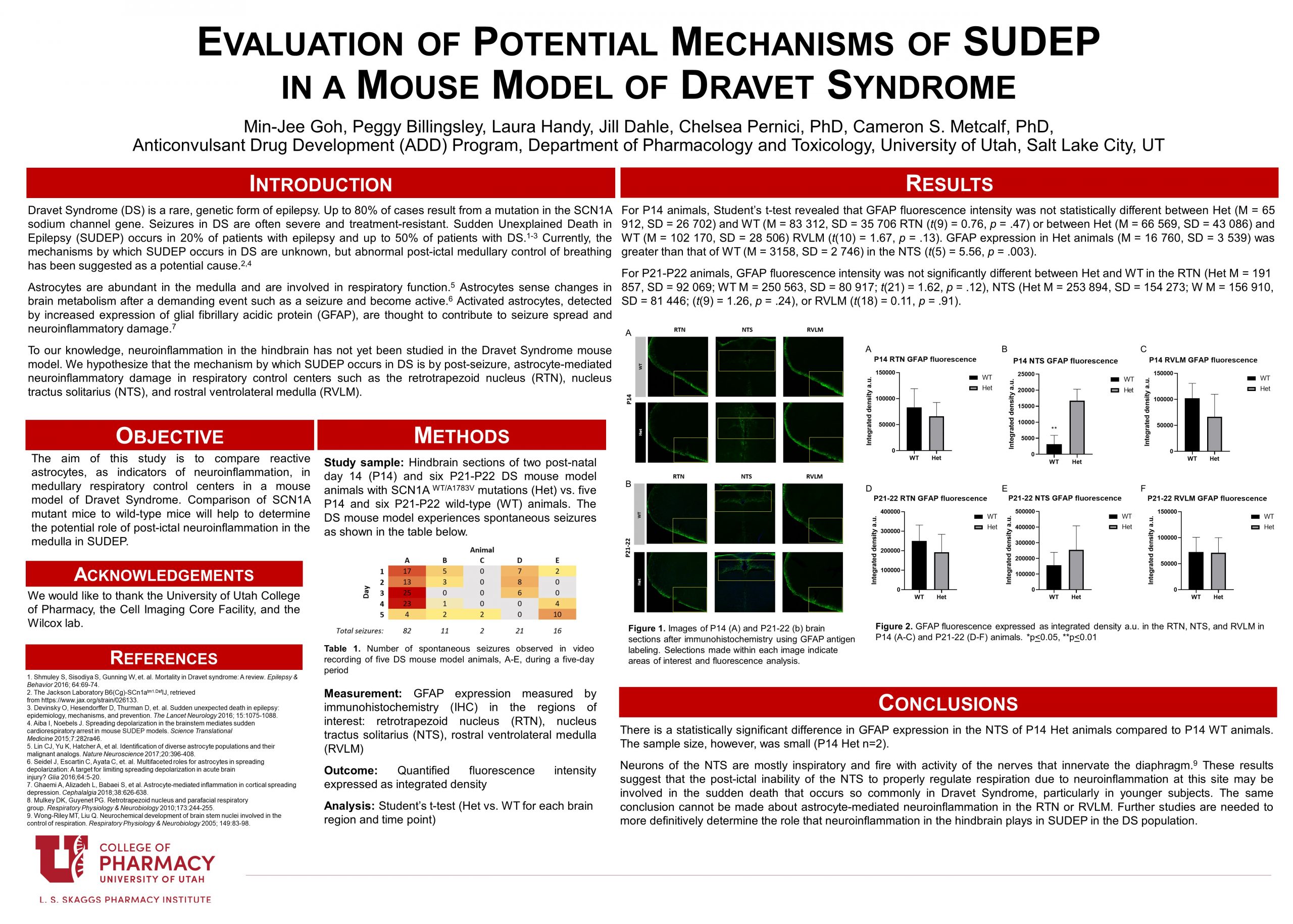Goh Min-Jee
Evaluation of Potential Mechanisms of SUDEP in a Mouse Model of Dravet Syndrome
April 27, 2020 in College of Pharmacy, Virtual Poster Session Spring 2020

Rationale:
Dravet syndrome (DS) is a genetic epilepsy disorder, the majority resulting from mutations in the sodium channel SCN1A gene. Sudden Unexplained Death in Epilepsy (SUDEP) occurs in up to 50% of DS patients. Risk factors for SUDEP have been identified, but mechanisms are not well understood. We hypothesize that activated astrocytes mediate post-ictal neuroinflammatory damage in the medulla. This neuroinflammatory damage is thought to disrupt medullary respiratory control centers, leading to respiratory dysfunction and sudden death. Glial fibrillary acidic protein (GFAP) is a marker of astrocyte activation and of neuroinflammation. Understanding the mechanisms of SUDEP in DS is significant as it will allow us to begin to develop therapies to prevent this fatal outcome.
Methods:
The objective of the study is to compare neuroinflammation in medullary respiratory control centers of the Dravet Syndrome mouse model (Het) to wild-type (WT) animals of two different ages, post-natal day 14 (P14) and P21-22 using GFAP expression as a marker of astrocyte-mediated inflammation. Brain tissue from WT and Het animals were sectioned and immunohistochemistry was performed to determine GFAP expression in three medullary respiratory control centers: the retrotrapezoid nucleus (RTN), nucleus tractus solitarius (NTS), and the rostral ventrolateral medulla (RVLM). Quantified GFAP fluorescence intensity was compared for Het vs. WT for each brain region and age.
Results:
There is a statistically significant difference in GFAP expression in the NTS of P14 Het animals compared to P14 WT animals. This differs from the RTN and RVLM of P14 and NTS, RTN, and RVLM of P21-22 animals, where no significant difference in GFAP expression was seen between WT and Het animals.
Conclusions:
These results suggest that the post-ictal inability of the NTS to properly regulate respiration and respond to hypoxia due to activated astrocyte-mediated neuroinflammation at this site may be involved in the sudden death that occurs so commonly in Dravet Syndrome, particularly in younger subjects. The same conclusion cannot be made about the RTN or RVLM. Further studies are needed to more definitively determine the role that neuroinflammation in the hindbrain plays in SUDEP in the DS population.
